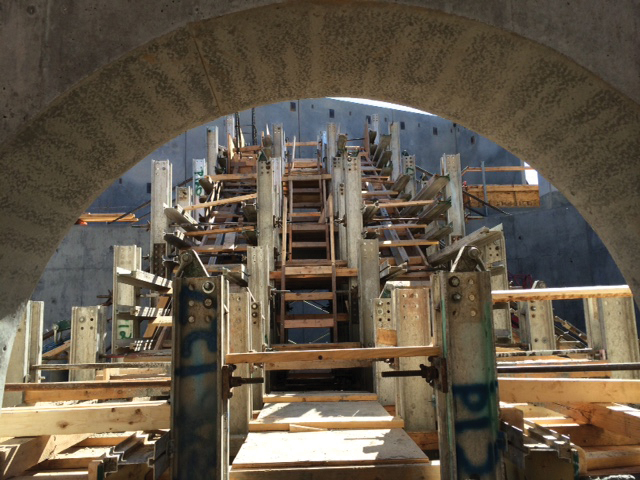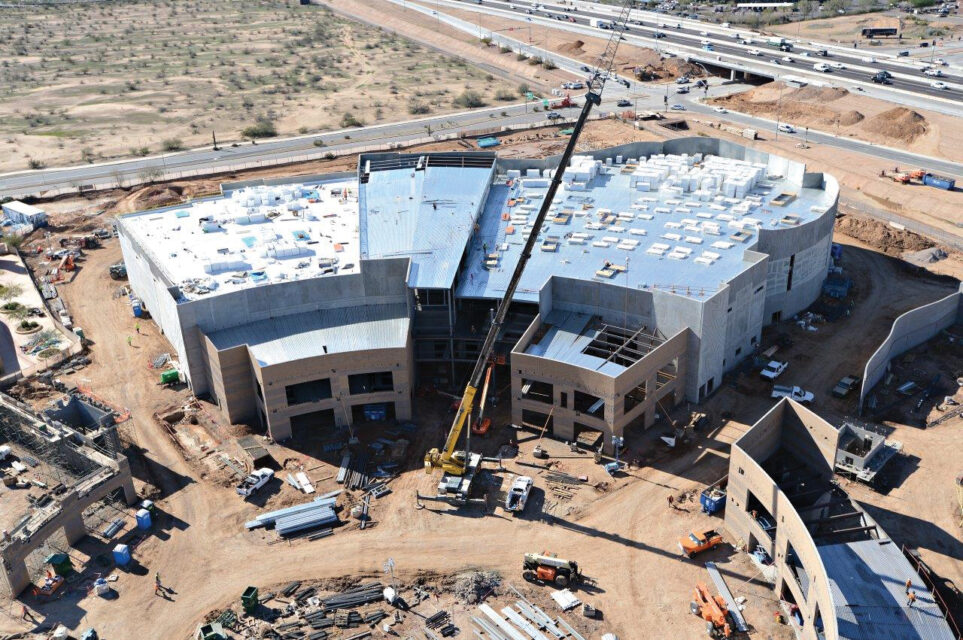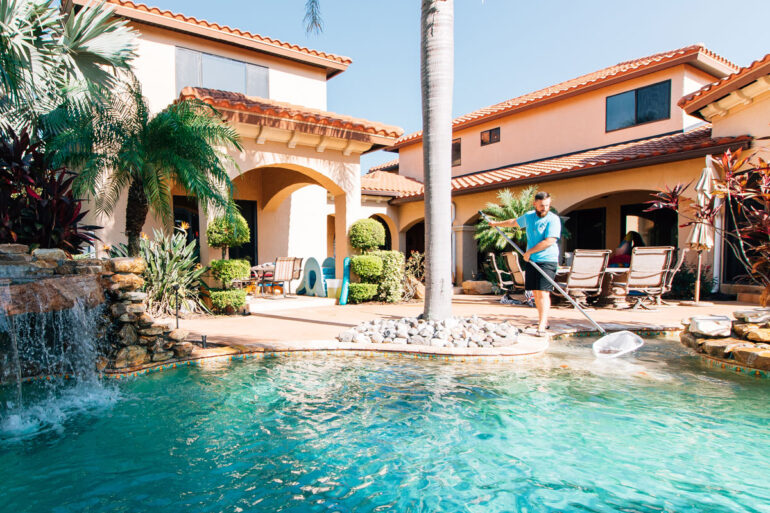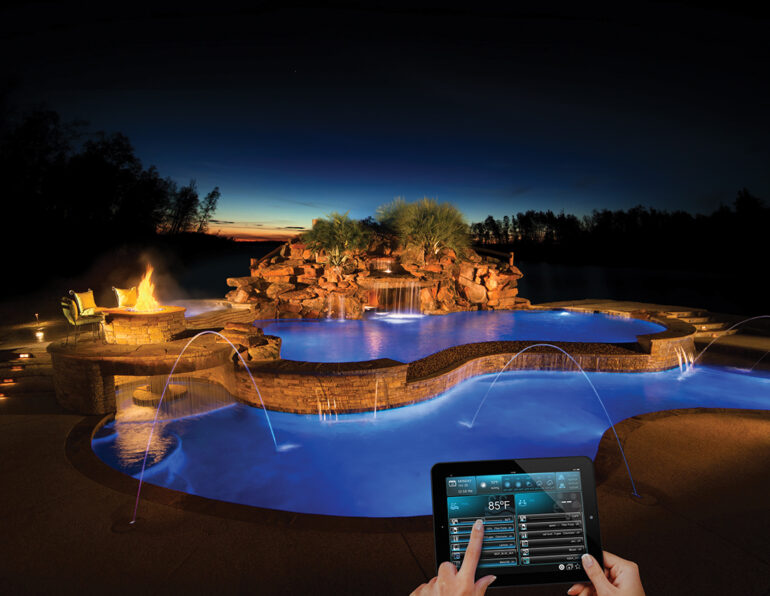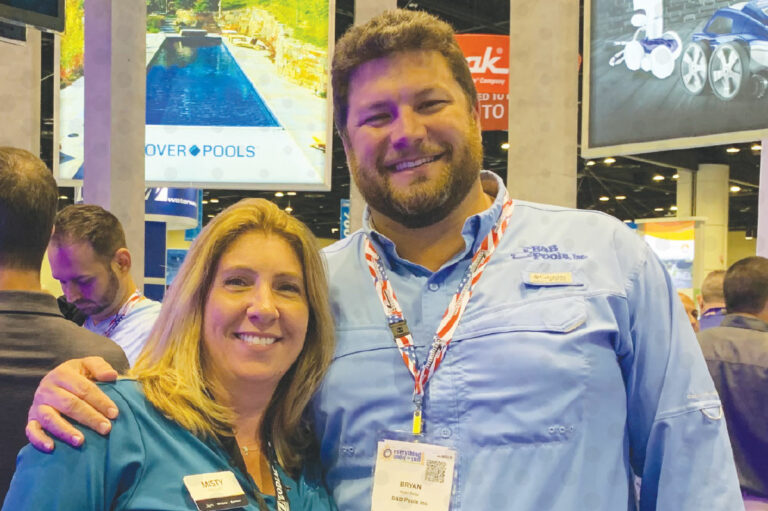Mega Projects, Mega Challenges
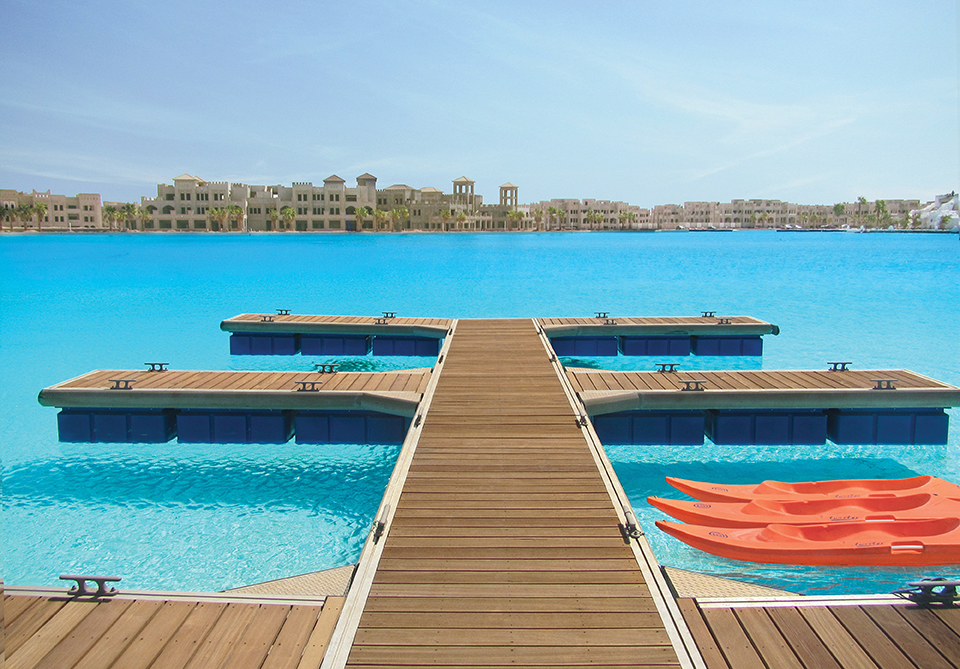
Although building a pool in someone’s backyard is no easy task, the world’s most massive water-based superstructures test the earthly possibilities of engineering and construction. From seemingly insurmountable design challenges to a complicated web of international laws and regulations, the minds behind the world’s most ambitious projects must find solutions to match their ideas.

OdySea:
A Stroll Through The Open Ocean
In the heart of Arizona’s Sonoran desert lies an ocean.
OdySea Aquarium in Scottsdale offers its 15,000 daily visitors a unique level of intimacy with the sharks, turtles, jellyfish, penguins, octopuses, electric eels, stingrays and hundreds of other species of marine life that call the facility home.
The two-story, 200,000-square-foot aquarium — which spans 16 acres — features 48 live exhibits in 55 tanks that hold a combined 2 million gallons of water.
The developers believe it has reset the bar for aquariums worldwide.
Guests travel “through” the sea via acrylic underwater walkways and a tubular escalator surrounded by dangerous and mysterious animals from the world’s rivers, oceans, bayous and reefs. Hanging from the ceiling of the building’s Aqua Lobby are a dozen 7,500-pound acrylic spheres filled with color-coordinated schools of fish.
The company tasked with bringing this marvel of engineering to life was McCarthy Building, Inc., one of the largest general contractors in the country.
“We self-performed the installation of all the cast-in-place concrete, as well as all the HVAC, plumbing and life-support systems for the project,” says Michael Gonzalez, McCarthy pre-construction director.
With a level of collaboration rare for projects of this size, McCarthy worked closely with engineers and design teams from the outset.
“We were brought on very early in the process,” Gonzalez says. “We worked in a design-assist role with the structural and mechanical engineers, and we brought on our structural and electrical subcontractors to work side-by-side with the engineers.”
Among the gargantuan challenges were the installation of 5,455 square feet of acrylic viewing windows, 300 pumps, more than 42,000 lineal foot of piping, 2 million pounds of steel, 1,198 beams and more than 10,000 cubic yards of concrete. A 30-ton tilt panel crawler crane lifted and placed 72 tilt wall panels, the largest of which was 60 feet high and weighed 220,000 pounds.
Not to mention the aquarium has no right angles.
“It’s built on a radius, which presents its own challenges,” Gonzalez says. “There are no perpendicular lines anywhere in the building.”
The secret to McCarthy’s success was meticulous 3-D modeling, which started during the earliest design phase and continued through completion. A few months before opening, the team used 3-D modeling to chart the best move-in path for sharks arriving in massive boxes.
“The use of technology is one of the highest levels I’ve ever seen on any project,” Gonzalez says. “If we had not built this building virtually before we started construction, we would have had serious challenges in the field.”
With part of its worksite situated on Pima-Maricopa Indian lands, sensitive cultural negotiations added another layer of complexity.
“First and foremost, we’re working on their land,” Gonzalez says. “We had to remember throughout the project that we were guests on their property.”
They paid homage to the tribe by incorporating its culture into the aquarium.
“Everything from the colors we used to the plant selection for the landscaping pays respect to the land that we’re on,” Gonzalez says.
The entire project is the brainchild of Amram Knishinsky, OdySea’s lead developer, who was inspired by a visit to Disneyland to build an a aquarium with the trappings of a theme park.
“The vision of our developer is pretty incredible,” Gonzalez says. “He had all of this in his mind. He’s traveled the world and built one aquarium before, but when he conceived this aquarium, he said ‘This is going to be different.’ It was not uncommon for us to show him the progress of the building and for him to get teary eyed. It has been in his mind for 13 years, and we’ve finally made it a reality.”

Crystal Lagoons:
Bringing the Caribbean to You
On the other side of the world, visitors flock to a different kind of oceanic paradise in a different desert. In the mountain desert hinterland of Nabq, Egypt, tourists in Sharm El Sheikh swim, sail and take in the sun on pristine, crystal-clear turquoise water surrounded by Caribbean-style white sand beaches.
The lagoon is no mirage: It’s a technological marvel of science and mega-construction. As the dominant amenity in a massive, three-square-mile tourist complex that boasts golf courses, hotels, marinas, a museum and 30,000 residential units, the 1.35-million-square-foot lagoon was built with conservation and efficiency in mind.
Its ultrasonic filtering system conforms to the strictest international standards of physicochemical and microbiological water quality. It requires 100 times less chemicals than swimming pools and drinking water, and consumes just 2 percent as much energy as a traditional filtration system.
“Our Wi-Fi internet platform monitors, controls and operates the lagoons from a central location, including all the hydraulic, biochemical and mechanical systems of the lagoons,” says Uri Man, CEO of Crystal Lagoons U.S. Corp. “Our water is much cleaner than what is allowed by federal EPA standards for direct-body contact. We’re not even in the same universe.”
The lagoons can turn any type of water (salt, fresh or brackish) into pristine seawater beachfront literally anywhere in the world — even as the company expands to the drought-wracked American West.
“We don’t need to use water that’s meant for consumption,” Man says. “In California, our geologist looks for deep saltwater aquifers that have no value for human consumption. There is no controversy at all.”
In 2015, Guinness World Records named the lagoon at Sharm El Sheikh the largest crystalline lagoon on the planet. It toppled the previous record held since 2007 by a 115-foot-deep artificial lagoon in San Alfonso del Mar, Chile. Casino titan Steve Wynn is planning a mega complex in Las Vegas that will feature the largest man-made lagoon in the United States.
All three projects are among the more than 300 Crystal Lagoons sites in more than 60 countries.
“We have over 1,000 patents in 150 countries,” Man says. “We are the only company in this market.”
As its footprint expands, so does its vision — Crystal Lagoons is working with city planners to incorporate public lagoons into urban planning strategies.
“Public lagoons can completely transform the lifestyle of the general public,” Man says. “You can imagine the impact a lagoon can have on people who live in cities where they previously had no access to beaches or watersports. It’s an equalizer for people who may not have the economic means to ever go on a vacation to the Caribbean.”
Like OdySea’s Knishinsky, the Crystal Lagoons concept can be traced to the innovative vision of a single inspirational figure, Fernando Fischmann, a brilliant Chilean developer and scientist who had an epiphany after visiting the Caribbean.
“He’s considered the Steve Jobs of South America,” Man says.
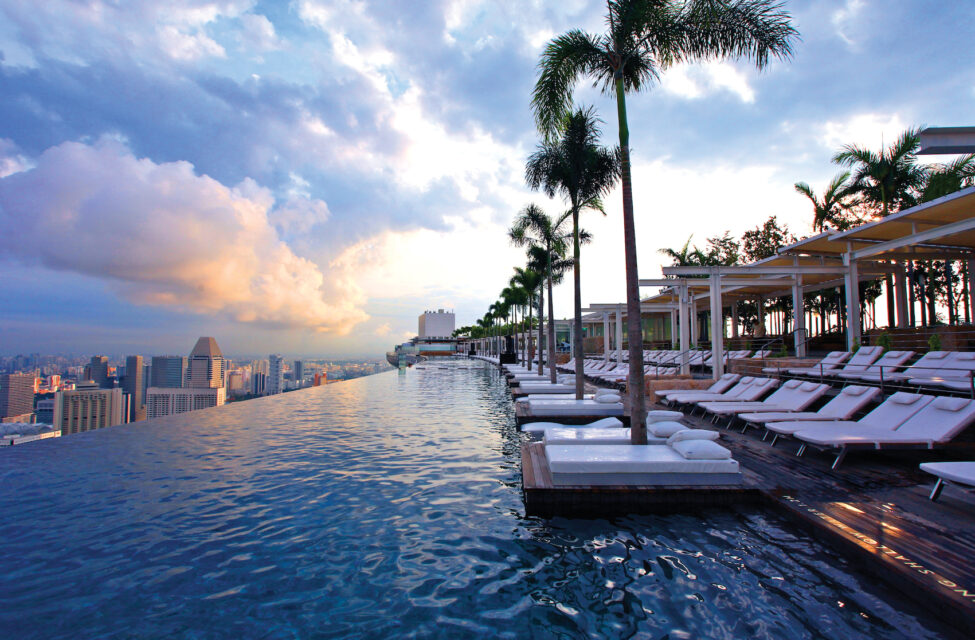
Marina Bay Sands:
A Relaxing Dip in the Sky
Fifty-seven stories above the glistening, modern Singapore skyline, tourists swimming in the Marina Bay Sands Skypark Pool couldn’t possibly imagine the engineering challenges that come with building the world’s highest and largest outdoor infinity pool.
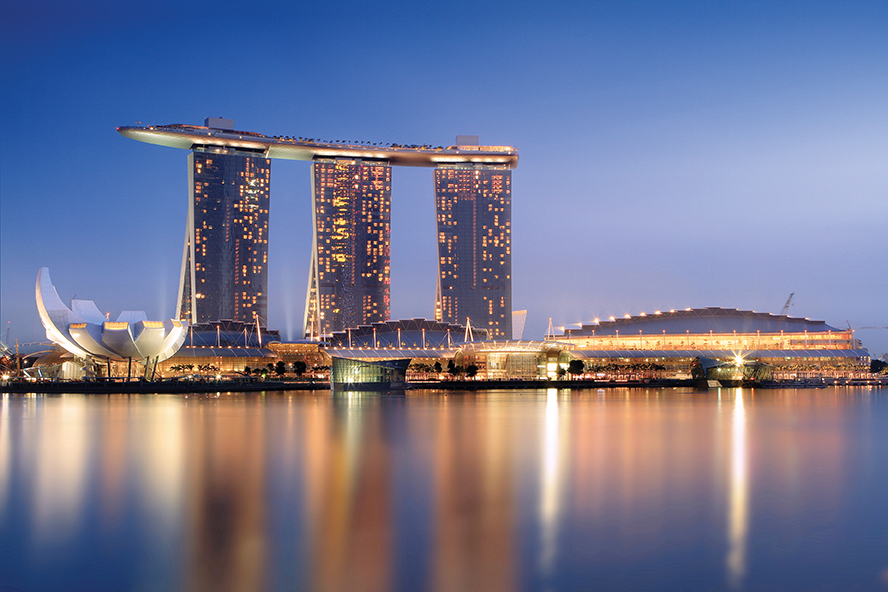
Straddling the tops of three skyscrapers more than 656 feet in the air, the 492-foot-long, 376,000-gallon pool is part of a rooftop skypark longer than an aircraft carrier.
Innovez Engineering — the firm tasked with designing and building the pool — has a long resume filled with difficult commercial projects, but nothing in its history prepared them for the rigors of Singapore.
The pool comprises three separate 50-meter stainless steel enclosures — connected at the joints by four-ton moveable terraces that form a bridge across the triple towers. Buildings naturally settle over time, which posed a considerable challenge. Since the three skyscrapers would settle at different rates, the pool was vulnerable to cracking and rupturing, forcing the team to create a foundation of moveable jacks.
“Since the pool straddled three towers, we had to ensure the solution could accommodate the different heights as the buildings settle,” project director Marcus Ng says in a press release. “Building the pool on the hydraulic jacks was an immense benefit. It allowed us to adjust each jack — in a vast network of over 490 jacks under the pool — so that the leveling of the pool can be achieved.”
A labyrinth of flexible pipes woven beneath the pool mitigated the uneven foundational settling. More than 250,000 special tiles were flown in from Spain to meet the deflection criteria for stainless steel. The 150-meter infinity edge overflow trough frees up crucial space by pulling double duty as the balancing tank.
In spite of the overwhelming engineering challenges, crews finished work in an astounding seven months.
“The prefabrication of the stainless steel gave us the luxury of space to work off-site until installation,” Ng says. “In addition, the modular nature of the installation meant that prefabrication and installation could happen concurrently. This freed up a lot of time and resources — and more importantly, maximized our effectiveness on-site.”
Few pool builders have ever contended with uneven foundation straddling the tops of skyscrapers or the pitfalls of building an ocean in the desert. But the smallest backyard in-grounds and the most gargantuan commercial projects on the planet share a common thread: The builder must find solutions to the schedule-threatening challenges that are always right around the corner.

